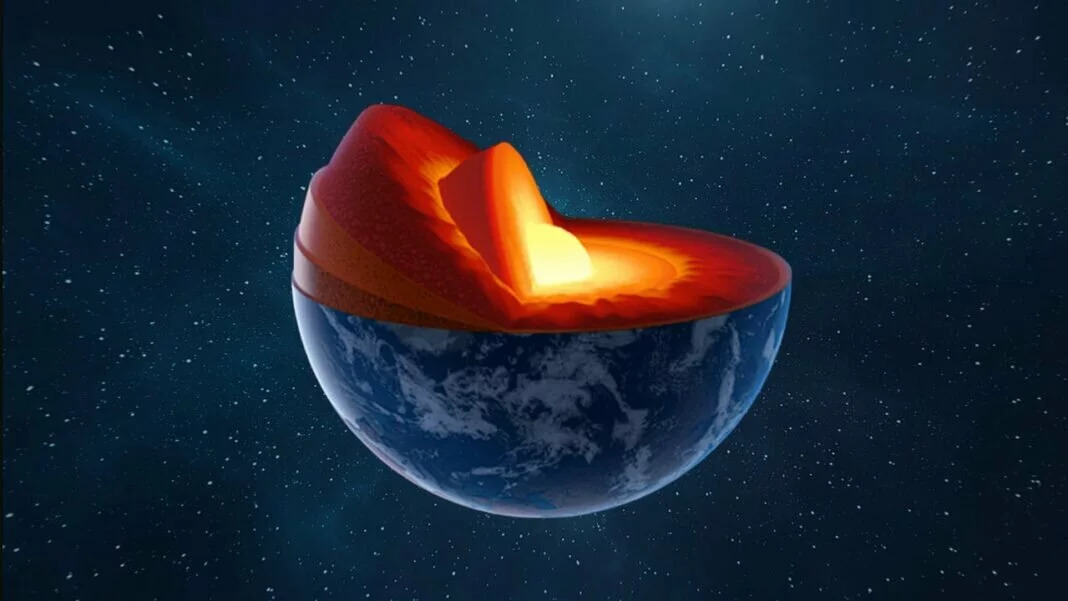A study of the Earth’s interior has revealed secrets the scientists previously thought were hidden deep within the planet. These secrets could have profound effects on the future of this planet. Scientists have discovered Earth’s core is cooling faster than originally thought, according to a paper published in Earth and Planetary Science Letters.
This study examines the conductivity of bridgmanite, previously deemed as the most abundant mineral on Earth. Bridgmanite is found in great quantity between the core and mantle of the Earth’s interior, a region known as the Core-Mantle-Boundary (CMB). Bridgmanite is 1.5 times more heat conductive than previously thought based on experiments using the extreme temperatures and pressures found on the CMB.
Thus, the Earth’s center is experiencing faster heat transfer than previously thought, such as molten rock transferring to the mantle and beyond from its center. It has significant implications for how we understand what is happening under our feet, beneath the Earth’s surface, and what that might mean for the future of us surface dwellers.
ETH Zurich’s Motohiko Murakami told Newsweek: “Since we find the thermal conductivity of bridgmanite become 1.5 times higher than previously thought, the heat transfer from the core would go more efficiently than previously thought, which ultimately leads to the cooling of the core more rapidly than expected.”
Convection currents of the molten rock in the Earth’s core transfer heat to the planet’s surface. These currents are also responsible for plate tectonics, the shifting of plates on top of the mantle that cause earthquakes and volcanic activity. The author of the paper suggests “more vigorous mantle convection” can also be expected, meaning that tectonic activity may also change.
“Through mantle convection, the heat from the deeper part of the Earth can be transferred to the surface, which is the original energy source for the tectonic activity,” Murakami said. “Thus, if we assume more vigorous mantle convection, more active tectonics could be imagined.”
Within the paper are potential interpretations of what lies ahead-far ahead-for Earth’s geology in the future. Murakami’s research showed that Mars could provide some insights into Earth’s long-term trajectory and history.
After heat transfer ended, Mars’ core became inactive, which ended key processes such as the magnetic field that created a dynamic environment on Mars, similar to Earth, that has since deteriorated into hostile desert environments that we encounter today.
Researchers found that Mars’ core cooled faster than expected, so could Earth’s core be on course to do so as well?
“Yes, I believe so,” Murakami said. “However, the thing is how long it would take, which is extremely difficult to predict precisely. How long the Earth would remain dynamically active would be definitely one of the biggest issues that we have to tackle. However, the time scale that would fit to this discussion should be millions or even billions of years.”
















